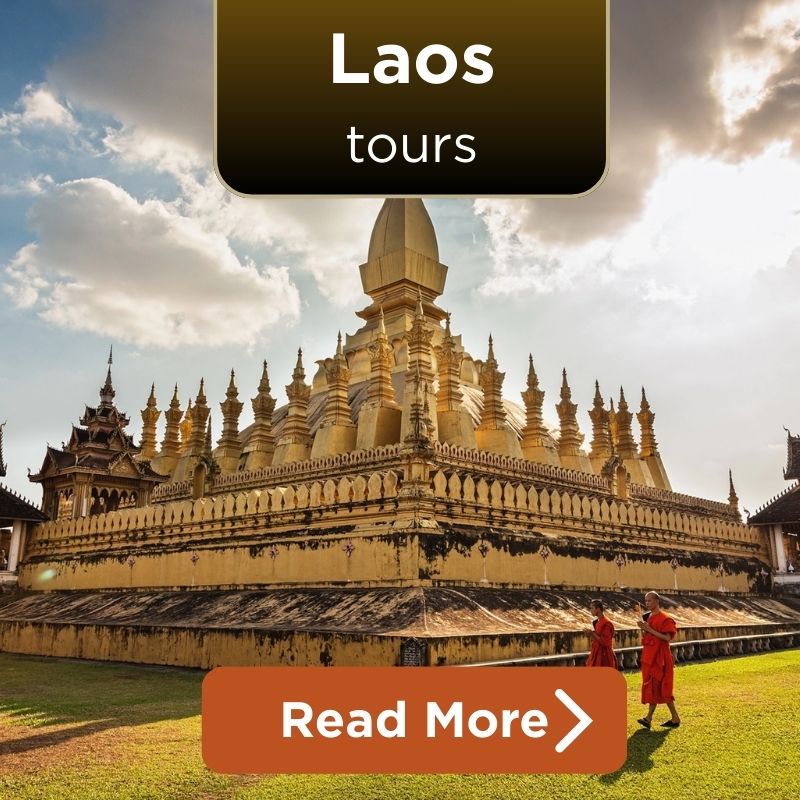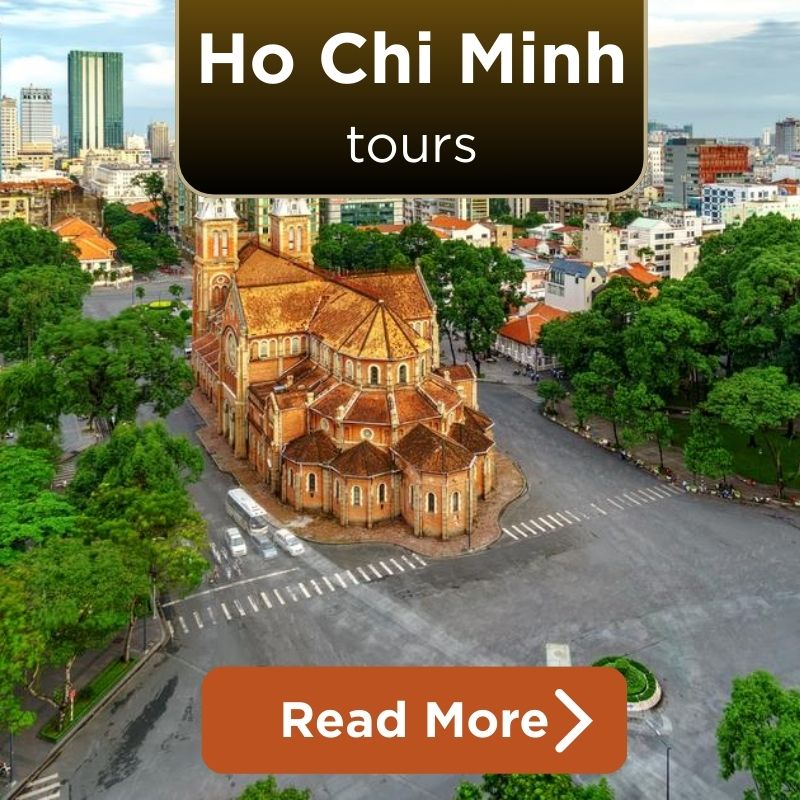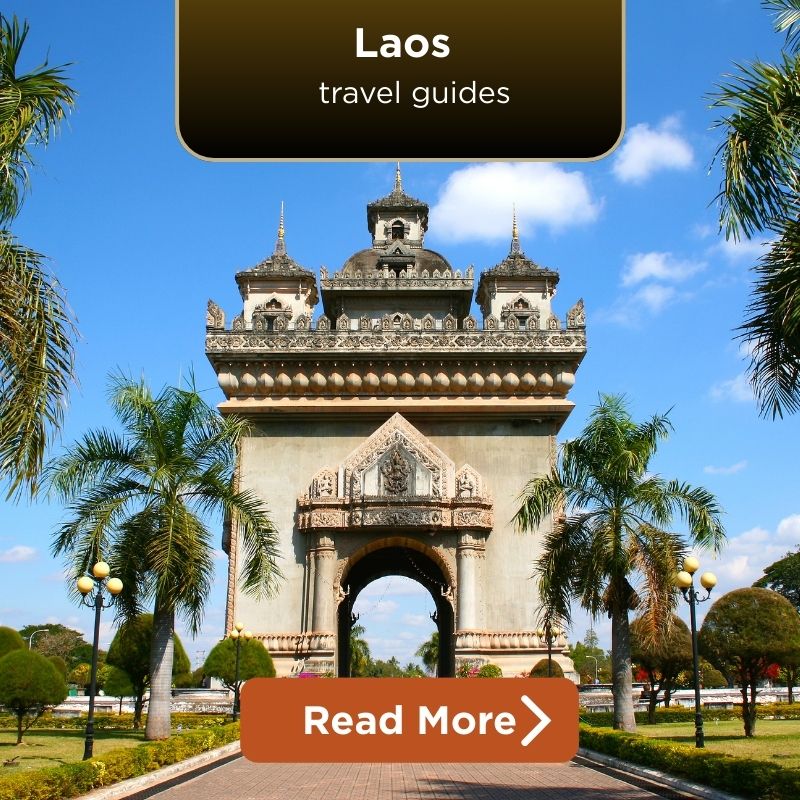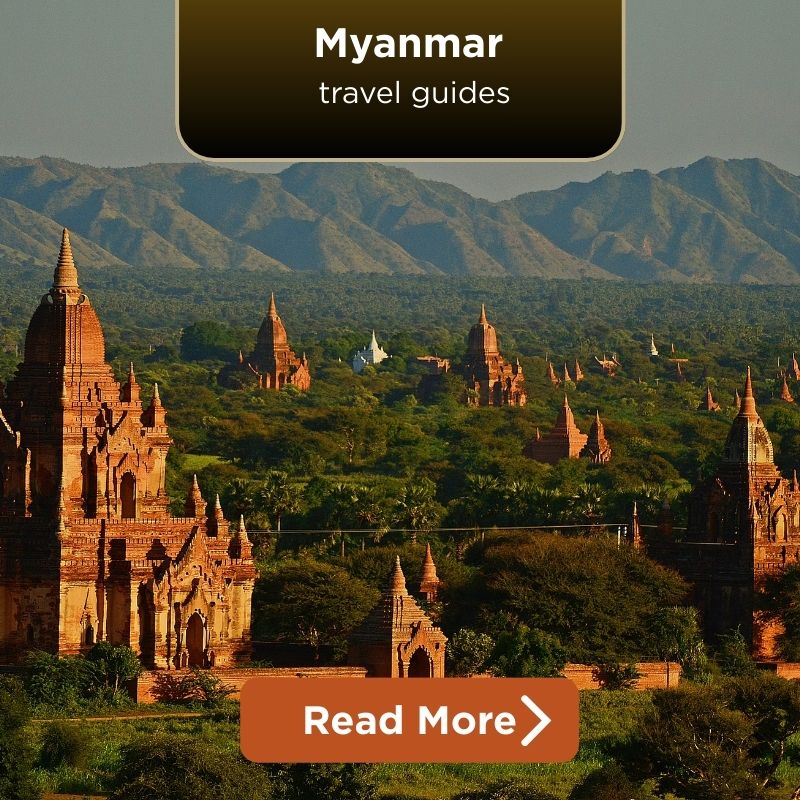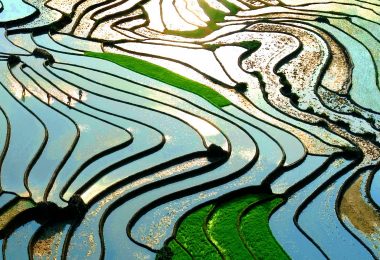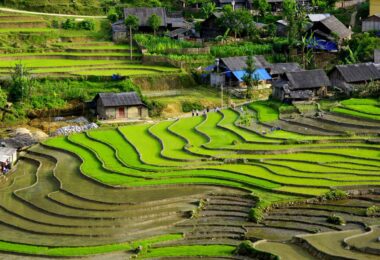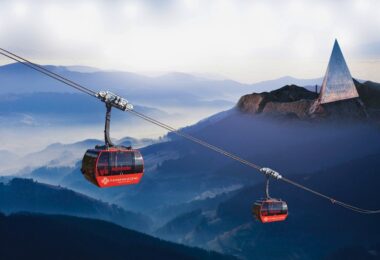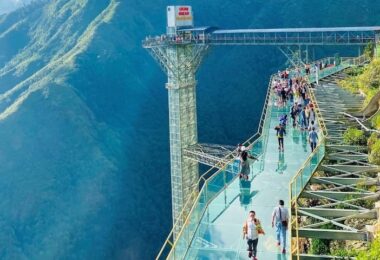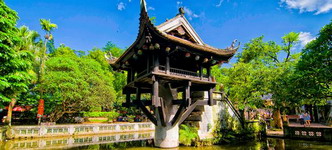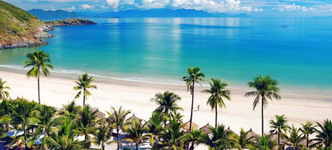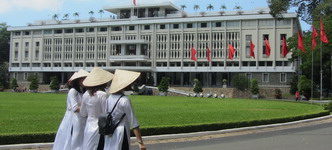Does It Snow in Sapa Vietnam in January?
Yes — but not every year. Sapa, Vietnam, in January, has seen snow around 3–5 times in the past decade, usually between mid-December and mid-January. Snow is a rare and unpredictable event, but the weather of Sapa, Vietnam, in January (0–10°C) provides perfect conditions for frost, ice, and fog that are very similar to a real winter scene.
Best places to see snow:
- Fansipan Peak – highest chance, usually gets real snow
- O Quy Ho Pass – frosted trees and vast scenery
- Ham Rong Mountain – early morning frost, stunning for photography
- Muong Hoa Valley – frosted trails, especially on upper ridges
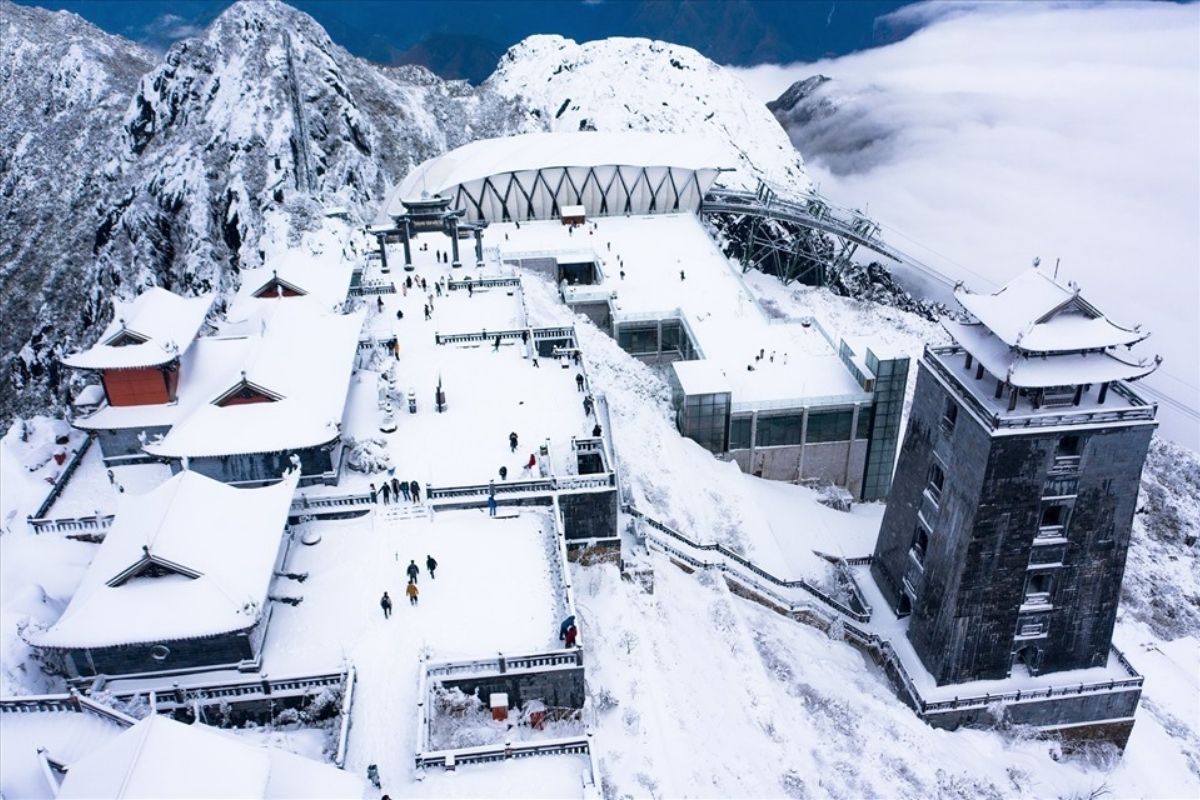
Snowy Sapa views from Fansipan (Source: laodong)
Tip: Check for cold front predictions, wake up early, and shoot for high-altitude shots at all times. For full-season trends, refer to the weather in Sapa, Vietnam.
Weather in Sapa Vietnam in January: What to Expect?
Temperature Overview
- Daytime: 8°C – 12°C
- Night: 0°C – 3°C (falls below 0°C in high-altitude areas like Fansipan and Quy Ho Pass)
- Feels cold with thick fog and high humidity
Rain, Humidity, Frost & Fog
- Rainfall: 20–60 mm/month (drizzle dominant)
- Humidity: around 78% – 82%
- Fog: Thick in the morning, especially around Cat Cat Village, Ham Rong Mountain, and Sapa Stone Church
- Morning frost is not unusual — rooftops, pine, and paths are usually covered by ice crystals
Sunny vs. Snowy Days
- On clear sunny days: You’ll enjoy breathtaking visibility across Muong Hoa Valley and even see Fansipan Peak from town
- On cold, cloudy days: Expect frost or occasional snow in higher areas — a signature moment of Sapa, Vietnam, in January
- Even without snow, the landscape feels straight out of a winter fairy tale — misty, poetic, and full of natural beauty
Top Winter Experiences in Sapa Vietnam in January You Shouldn’t Miss
Fansipan Peak – Snow Hunt on the Roof of Indochina
- Location: Sun World Fansipan Legend, Nguyen Chi Thanh Street, Sapa Town
Hop aboard the cable car and ride up to 3,143 meters — Vietnam’s peak height! In Sapa, Vietnam January, this is where there is a chance of snow. The summit commonly experiences frost or actual snow on pagodas, stone barriers, and Buddha statues. Wear gloves and go early to outsmart the fog.
Tip: The region dips below 0°C — check Sapa Vietnam weather before your visit.
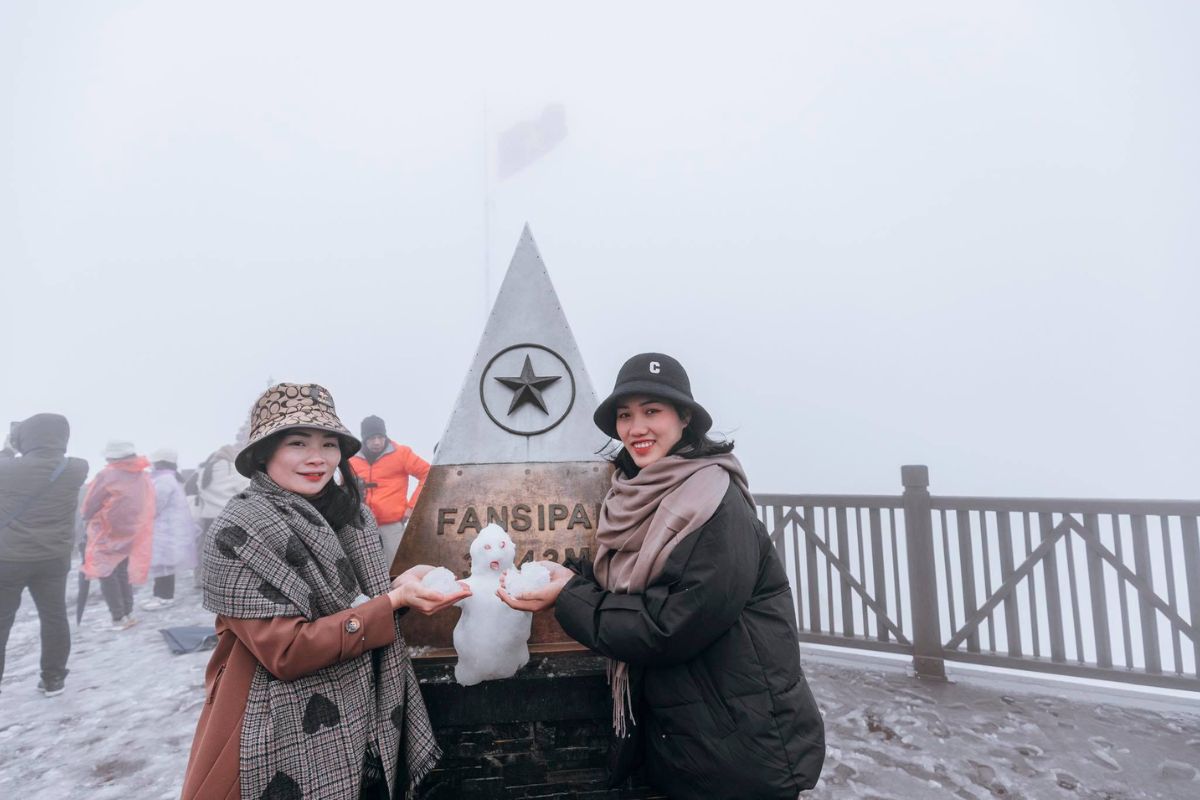
Snow Hunt on the Roof of Indochina (Source: thanhnien)
Muong Hoa Valley – Trekking Through Mist and Culture
- Start Point: Hau Thao Commune, about 10km from Sapa Town
This valley stretches through Lao Chai, Ta Van, and Y Linh Ho villages — home to Black H’mong and Giay people. In Sapa, Vietnam weather in January, you’ll hike past frost-covered terraces, wooden houses, and smoke trails rising from firewood stoves. It’s quiet, poetic, and full of chances to immerse yourself in the local culture.
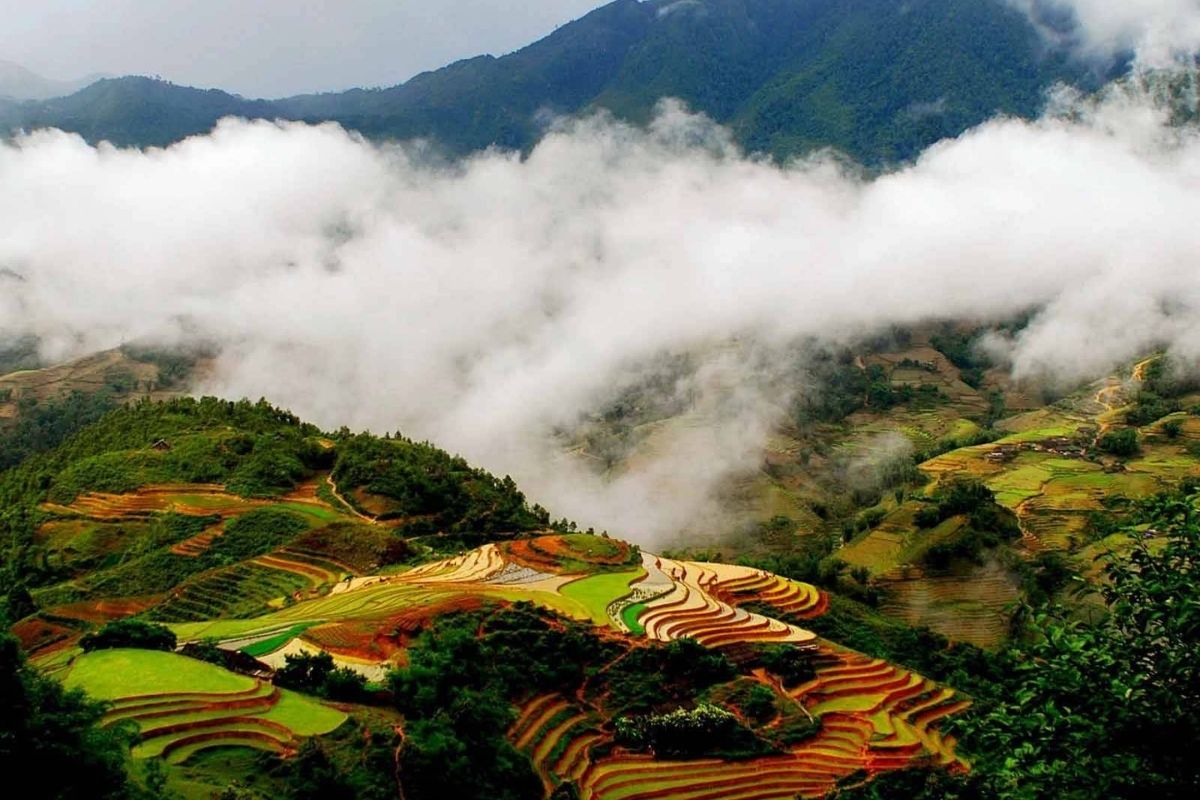
Muong Hoa Valley in January (Source: tourdulichsapagiare)
Ham Rong Mountain – Cloud Hunting at Your Fingertips
- Entrance: Next to Sapa Central Square, Fansipan Street, Sapa Town
A favorite for those visiting Sapa without leaving town. Ham Rong Mountain is famous for its Cloud Yard, orchid gardens, and snow-dusted rock formations in January. Climb just 30–40 minutes and you’ll see Fansipan Peak floating above clouds (on a clear day).
Best time: 8:00–10:00 AM, when frost still sparkles under sunlight.
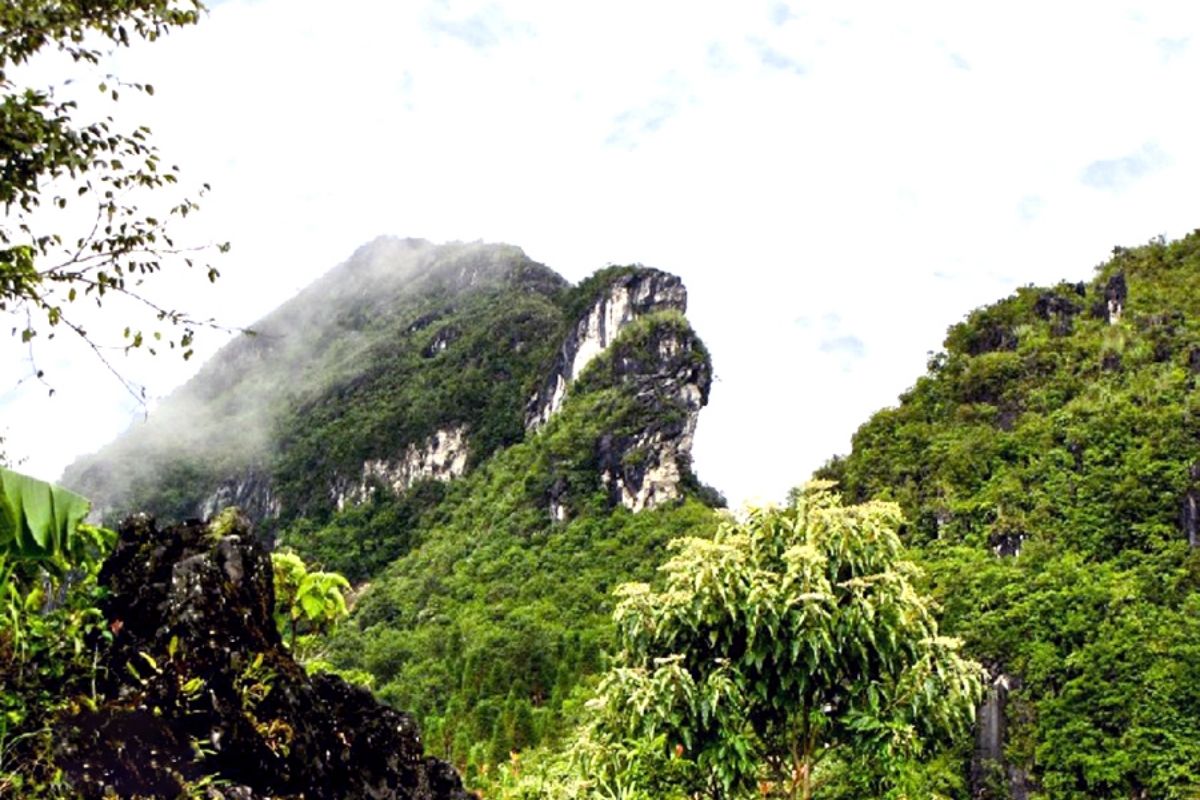
Ham Rong Mountain in January (Source: vietfeelingtravel)
O Quy Ho Pass – White Roads and Heavenly Views
- Pass Entrance: 12km west of Sapa Town via National Highway 4D
This mythical pass links Lao Cai and Lai Chau province and is well above 2,000 meters. In Sapa, Vietnam in January, it’s one of the only spots where roads can be blanketed with snow or ice. From the top, peach blossoms, pine forests, and frost-dipped mountains are visible.
Local coffee shop: Heaven’s Gate Coffee – spice up with ginger tea high above the clouds.
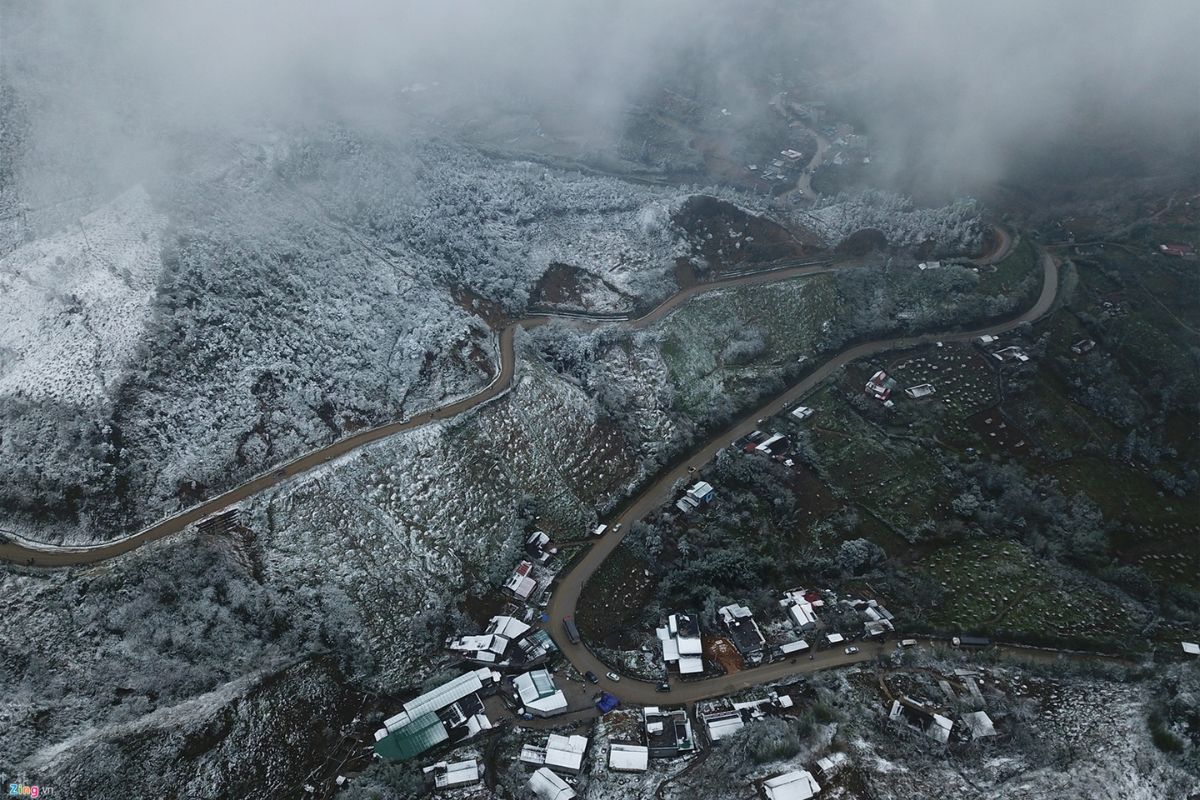
O Quy Ho Pass in January (Source: bazantravel)
Sapa Stone Church – Ancient Beauty Meets Winter Fog
- Address: Sapa Town Center, near the Square and Sun Plaza
Built-in 1895 by the French, the stone church becomes surreal in winter in Sapa. Fog-choked or frosted, its moss-covered roof and stone belfry are the perfect backdrop for winter shots. Street food stalls outside the church sell hot sweet potatoes and roasted chestnuts — a delight on a chilly day.
Tip: Visit in the early evening for the most mystical fog lighting.
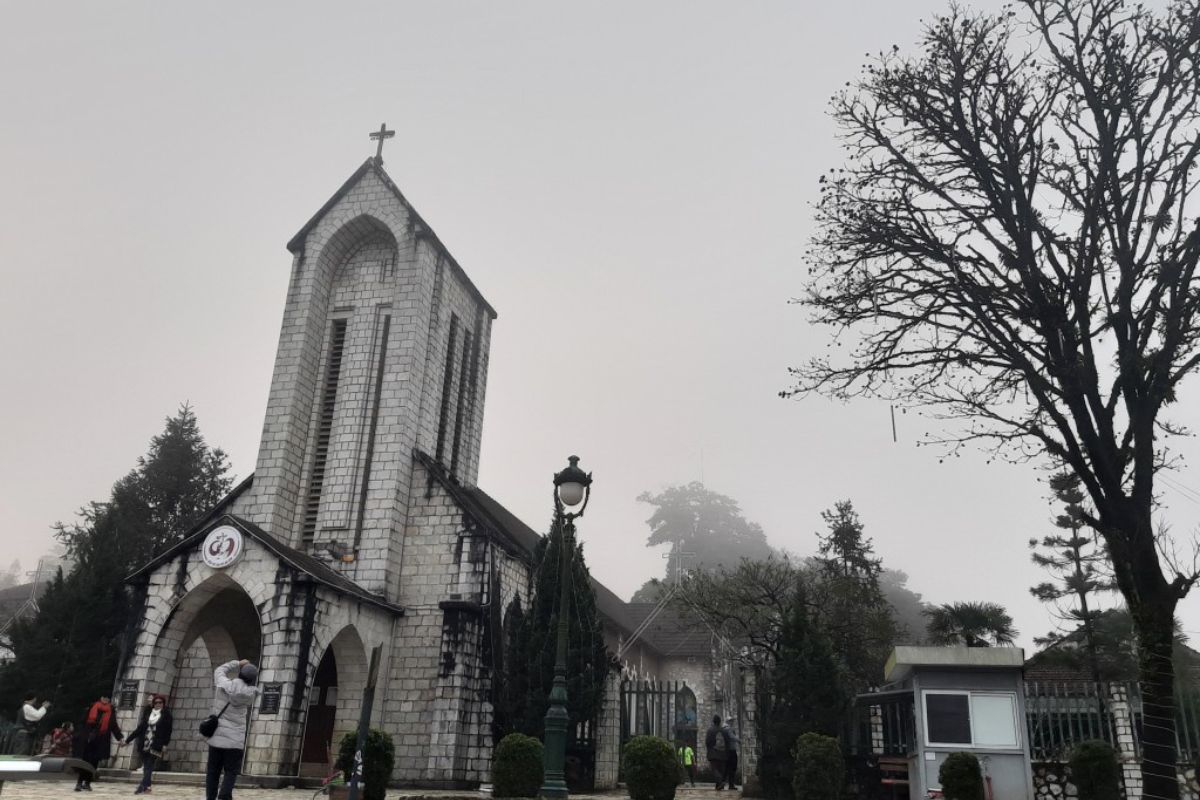
Sapa Stone Church in Winter (Source: gody)
Cat Cat & Ta Van Villages – Culture Beneath the Cold
- Cat Cat Village: San Sa Ho Commune, 2km from Sapa Town
- Ta Van Village: Ta Van Commune, ~10km southeast of town
Both villages are ethnic minority people’s traditional villages. In Sapa, Vietnam January, the villages have a timeless atmosphere due to cold weather and misty fog. Walk through cobblestone streets, visit weaving workshops, taste bamboo rice, or borrow traditional brocade clothes for photos.
Local tip: Bring warm socks — all houses have fireplaces, not heaters.
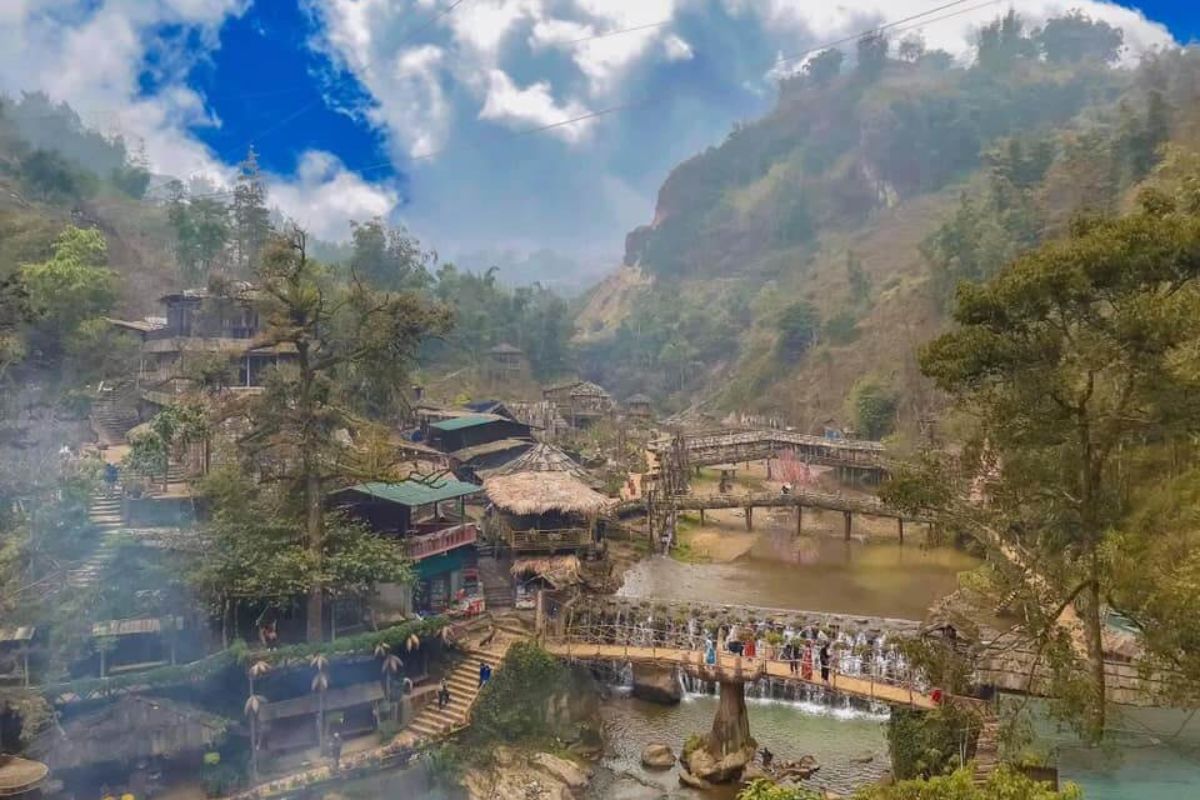
Cat Cat Villages in Winter (Source: disantrangan)
January Festival Calendar in Sapa Vietnam in January
Gau Tao Festival – H’mong Heritage & Highland Matchmaking
- Where: San Sa Ho Commune, Cat Cat Village, or surrounding H’mong communities
- When: 2nd–4th day of the Lunar New Year
This ancient H’mong festival is both sacred and joyful. Families organize Gau Tao to give thanks to ancestors, pray for health, and seek good fortune. You’ll witness shamans performing rituals, followed by vibrant games, bamboo dancing, and matchmaking events for young singles. In Sapa, Vietnam, in January, the cold only enhances the cozy atmosphere around community bonfires.
Keep an eye out for authentic khen reed pipe melodies and colorful brocade costumes swirling under winter skies — an unforgettable experience not soon forgotten.
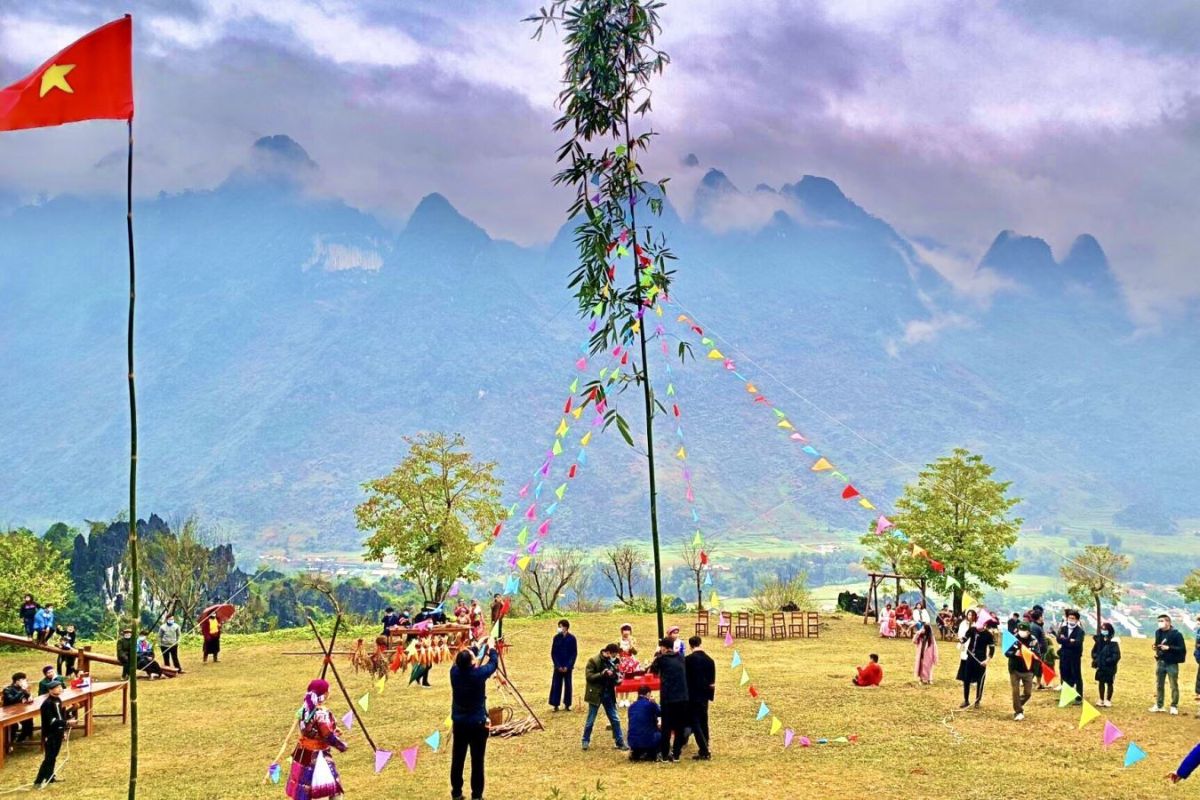
Gau Tao Festival (Source: baotintuc)
Roong Pooc Festival – Love Songs in the Misty Valley
- Where: Ta Van Village, in the heart of Muong Hoa Valley
- When: Between the 5th–15th day of the Lunar New Year
The festival is sponsored by the Giay ethnic group and venerates the Land Mother, praying for a rich harvest. It is also a large social event where villagers sing giao duyen (love duets), play tug-of-war, and dine on sticky rice foods under flowering peach blossoms.
Amidst the Sapa Vietnam climate in January, the bright flags, singing voices, and steamy bowls of local food light up the chilly wind. It is the best time to soak up the native culture and taste the essence of winter in Sapa.
Don’t forget your camera — foggy rice fields and festival dances give rise to unforgettable photos.
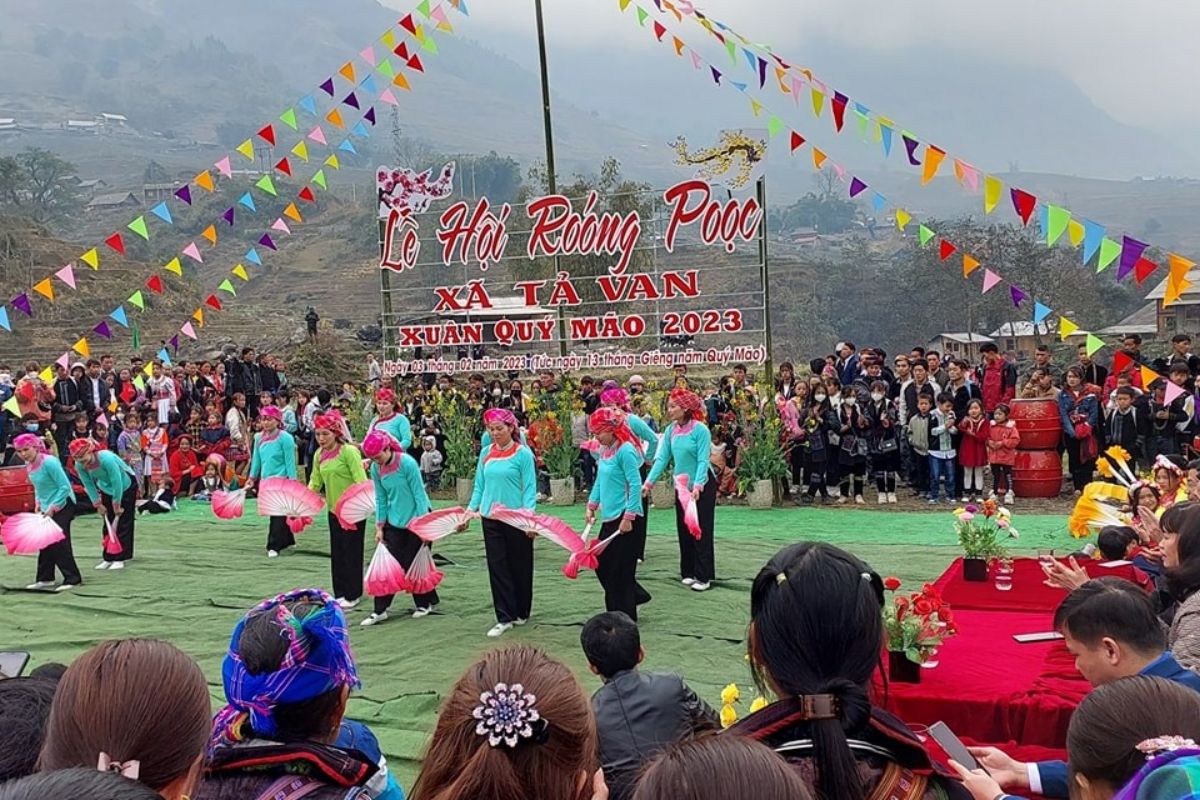
Roong Pooc Festival (Source: laocaitourism)
Tet Preparations – The Spirit of Vietnamese New Year
- Where: All across Sapa Town and villages like Lao Chai, Ta Phin, Ham Rong Mountain area
- When: Last two weeks of January (if Tet is early)
Should Tet (Vietnamese Lunar New Year) be in late January, Sapa, Vietnam, January is even magical. Homes are scrubbed, bánh chưng is made, and red paper charms are displayed. Kids wear new clothes, and villages prepare altars for offerings to the ancestors. Celebration levels are high, even with light snowfall.
Tip: Share real Tet traditions, and maybe help with the cooking by joining a Ta Van homestay.
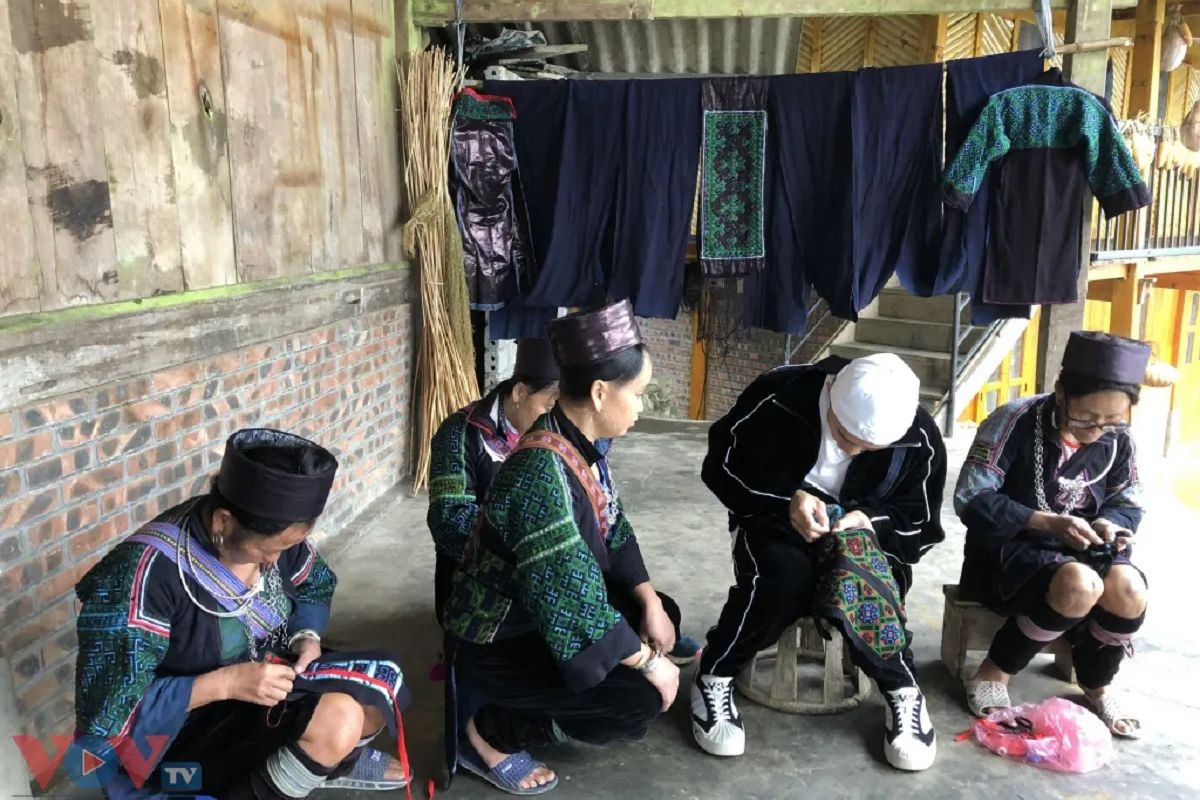
Sewing outfits to welcome Tet (Source: bdatrip)
Smart Travel Tips for a January Trip to Sapa Vietnam
Track Snow Forecasts Like a Pro
Sapa snow is rare but real, and usually a surprise.
To enhance your chances of witnessing it:
- Observe cold air masses (gio mua dong bac) on Vietnamese weather websites like NCHMF or apps like AccuWeather.
- Snow will most likely fall on the Fansipan, O Quy Ho Pass, and ridges over Muong Hoa Valley.
- Double-check daily local weather forecasts at your homestay or hotel.
Book Tours with Local Experts
Traveling around Sapa, Vietnam, especially in January, can be tough due to thick fog, rocky paths, or sudden temperature fluctuations, notably in areas like Ham Rong Mountain or Cat Cat Village.
That’s why it’s a good idea to:
- Book led walks or transport-covered tours with experienced locals.
- Ask about winter-safe tracks, homestays with heaters, or scenic spots like Sapa Stone Church or Ta Van under January conditions.
Tet Holiday Travel: What to Expect
If your Sapa Vietnam January tour happens to coincide with Tet (Vietnamese Lunar New Year), usually in late January, here is what you should know
- Crowds: Tourist volumes increase exponentially on the eve of and during Tet.
- Closures: Markets, restaurants, and attractions may close for 1–2 days during Tet.
- Culture: Red flags, peach blossoms, and firecrackers adorn the streets. Join in celebrations with sweet pastries and offerings.
Tip: Book accommodations in advance, especially near Muong Hoa Valley or the city center.
Handle the Altitude Cold (Especially if You’re from the South)
Traveling from Ho Chi Minh City or the Mekong Delta? Prepare yourself — Sapa Vietnam weather in January is on a whole different level!
What to pack:
- Heat-retaining jackets, thermal wear, and woolen layers
- Waterproof shoes (for slippery trails)
- Gloves, scarf, and warm beanie (particularly for dawn at Quy Ho Pass)
- Medicine for sinus problems or dry skin (the air is so much drier at altitude)
Conclusion
If misty mountains, colorful festivals, and the excitement of snowfall are your thing, then Sapa, Vietnam, in January is waiting for you. With lyrical fog, peach blossoms in bloom, and an in-depth cultural experience in ethnic minority villages, this is the best time to travel to Sapa for a truly unforgettable experience.
Get the latest weather in Sapa Vietnam, reserve your accommodations early, pack wisely, and let the highlands enchant you!
FAQ
Can you visit Sapa in January?
Yes, of course! Sapa, Vietnam, in January, is open to visits and offers a winter wonderland ambiance. Mists hang low in the valleys, the mountain peaks are frosty, and the ethnic festivals are colorful in January — just bundle up and you’re ready to go!
Is January a good time to visit Vietnam?
Yes, especially for northern Sapa and Hanoi. Whilst southern Vietnam is enjoying dry, sunny weather, the north offers cooler temperatures and cultural celebrations. If approached weather and fewer tourists appeal to you, January is a great time to travel to Vietnam.
Does it rain in Sapa in January?
It is, but not to a great extent. Sapa Vietnam weather in January involves drizzles, mist, and some frost. Rainfall is quite moderate (20–60mm), so although the air seems moist, it hardly hampers journey plans. Always look at the latest weather in Sapa, Vietnam, prior to going out.
Is Sapa worth visiting in winter?
Yes! Sapa winter is a magical experience you will not find during any other time of the year. From cloud-kissed rice terraces at Muong Hoa Valley to cozy treks through misty villages such as Cat Cat and Ta Van, the landscape is serene, the culture is lively, and the potential to see snowfall makes it an experience for a lifetime.







